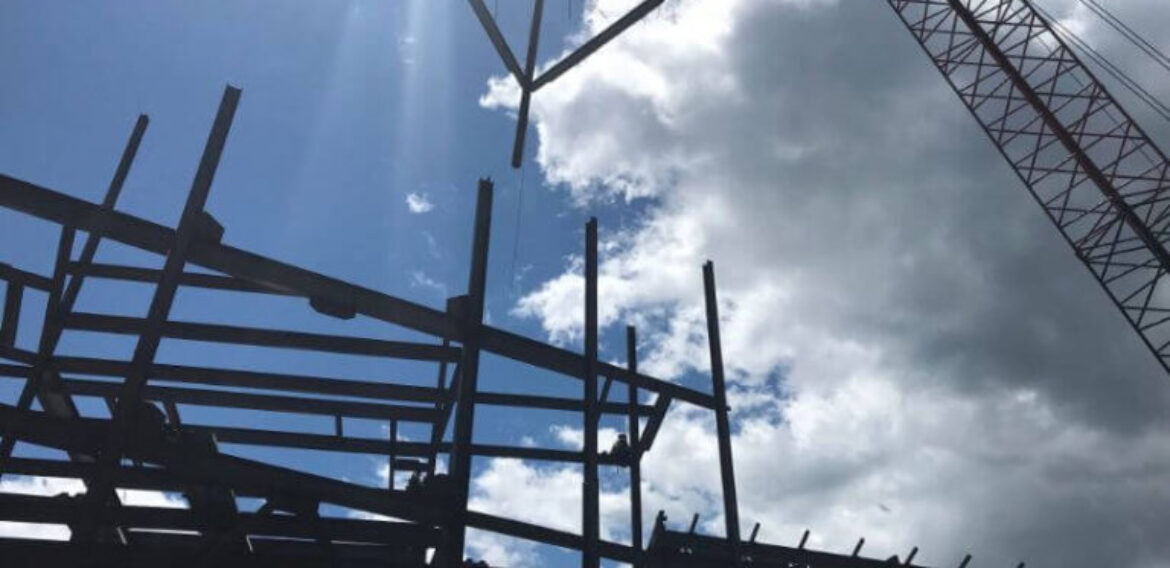Rigging and Material Handling Safety Training: Essential for Workplace Safety
Rigging and Material Handling Safety Training are important in the construction, manufacturing and warehousing fields.
These are however risky tasks that may not yield good results when performed improperly. Safety training Rigging and material handling Safety training training is essential.
It safeguards the workers, minimal accidents, and quality of work. This is a blog on the importance of Rigging and Material Handling Safety Training , and the general hazards to be considered and how Iehsas can assist your business to remain safe.
What is Rigging and Material Handling?
Rigging refers to the employment of tools such as ropes, chains, slings, and hoists to either lift or fix heavy objects.
During work, there is the process of moving, storing and protection of materials, which is known as material handling. Both require competence and care in order to ensure the safety of workers and equipment.
Why Rigging and Material Handling Safety Training is Crucial
Rigging and Material Handling Safety Training may lead to severe accidents that are not secure. These comprise falls, crushing wounds or fallen loads. Safety training informs the workers on how to:
- Use correct rigging methods
- Inspect equipment properly
- Know load limits
- Lift safely
- Respond in emergencies
Iehsas, for instance, offer such training to minimize injuries, downtime and address safety regulations.
Key Benefits of Rigging and Material Handling Safety Training
Fewer Workplace Accidents
Training would enable employees to notice hazards and shun dangerous activities. This leads to the reduction of falls or dropped objects.
Compliance with Safety Rules
Training ensures the employees observe OSHA and industry laws with regards to safety. This assists companies to evade penalties and lawsuits.
Efficiency Better and Productivity
Well trained employees transport goods more securely and faster. This reduces waiting time and errors.
Save Costs
Less accidents equates to less cash expended in health treatment and health insurance (cash spent in equipment repairs).
Essential Parts of Rigging and Material Handling Safety Training
Learning Equipment and Load Limits
Employees are taught about rigging equipment and the weight limit they can take. This prevents overloading and overloads.
Checking Equipment Before Use
It is demonstrated during training how to check the chains, slings, hooks, and hoists before working and find any damages or wear.
Using Proper Rigging Methods
Employees are also trained on the proper methods of loading and balance in carrying the load or when lifting or moving.
Mutual Hazards in Rigging and Material Handling to Watch For
Awareness of hazards can make work safe. Common dangers include:
Overloading of equipment: The weight lifted should be less than the carrying capacity of the equipment or it may fail or may drop when the weight exceeds the carrying capacity.
Unstable material: Vibrating loads can spill over and cause an accident.
Damaged equipment: The utilization of damaged rigging gear increases the probability of breaking down.
Bad communication: Liftynd accidents due to bad communication.
Pinch points and crush spots: Operators may be injured when they are stuck in between parts or loads.
Hazardous environment: Slick or messy floors are prone to accidental slippery and falls.
Monitoring these risks helps workers be on guard about them and observe safety regulations.
The Role of Management in Enforcing Safety Training Compliance
Good safety should have management. Their job includes:
- Furnishing materials: Giving good training by Iehsas and good safety equipment.
- Establishing explicit regulations: Issuing and disseminating rigging task safety regulations.
- Audit compliance: Performing frequent audits, and overseeing labor in order to be safe.
- Encouraging News: Development of an open culture in which workers can report the dangers in a safe way.
- The old way is better: Revising training and safety plans with feedback and reports.
Workers would also take safety seriously when the managers are in the fore, thus reducing the accidents and enabling work to go smoothly.
Tips to Keep Safety Strong After Training
- Service Equipment Periodically: Maintenance must be taken care of and that all the rigging gear should be in good condition and retired when faulty.
- Supervise and Audit Often: Safety checks and rigging work must be observed to guarantee that rules are adhered to.
- Promote a Safety Culture: Encourage employees to report unwelcome conditions and appreciate safety on a daily basis.
How Iehsas Delivers Effective Rigging and Material Handling Safety Training
Iehsas gives practical training in combination with theory classes. Certified trainers give practical examples and customize the course to your needs at the workplace. Key features are:
- Industrial customized courses.
- Frequent updates to keep the skills up to date.
- New training videos and aids.
- Post-training tests and certification.
Collaborating with Iehsas implies safer work sites and an assured workforce that is willing to perform rigging activities in a safe manner.
Conclusion
Rigging and Material Handling Safety Training is not only a boost of compliance. It shields the workers and enhances productivity.
Properly trained companies save money and downplay accidents. Iehsas provides proficient training that ensures your place of work is secure, and it is up-to-standards.
In order to enhance your working safety and minimize the risks of rigging, call Iehsas and receive professional solutions to your training!
FAQS
Who must be subjected to rigging and material handling safety training?
The warehouse and crane operators, those who take part in the process of lifting, moving or securement of the loads.
What frequency should safety training be undertaken?
Training occurs on hiring and needs renewed on an annual basis or with new equipment or regulations.
What are the equipment of rigging training?
Chains, slings, hooks, hoists, cranes and other lifting mechanisms, of safe use and checks.
Does Iehsas offer certification on completion of training?
Yes, Iehsas provides certificates on completion of successful courses.
Is training industry customizable?ss
Yes, courses are adapted according to your own business and work.







